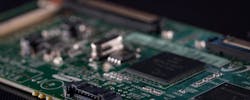CiA focuses new group on transceivers for microcontrollers
The nonprofit CiA (CAN in Automation) association has established the special interest group (SIG) 3.3-V transceivers. Vikas Thawani of Texas Instruments is chair of the SIG. Electronic control unit (ECU) manufacturers are selecting increasingly 3.3-V controller area network (CAN) microcontrollers. In order to avoid two supply voltages, CiA says that manufacturers like to use 3.3-V CAN transceivers, instead of the more currently used 5-V transceivers.
The scope of the SIG covers the following CAN transceivers, compliant with International Organization for Standardization (ISO) 11898-2:2024:
· CAN HS (high speed)
· CAN FD (flexible data rate)
· CAN SIC (signal improvement capability)
· CAN SIC XL (extended data field length).
The group will also consider transceivers with low-power and selective wake-up capabilities. A related conformance test plan, an interoperability test plan and an EMC specification are also in the SIG’s scope. The first specification is covering physical medium attachment (PMA) sub-layer implementations, according to the parameter set A and B as given in the ISO/FDIS 11898-2:2023. It is intended to release a CiA draft specification proposal (DSP) for 3.3-V CAN transceivers by end of 2024.

